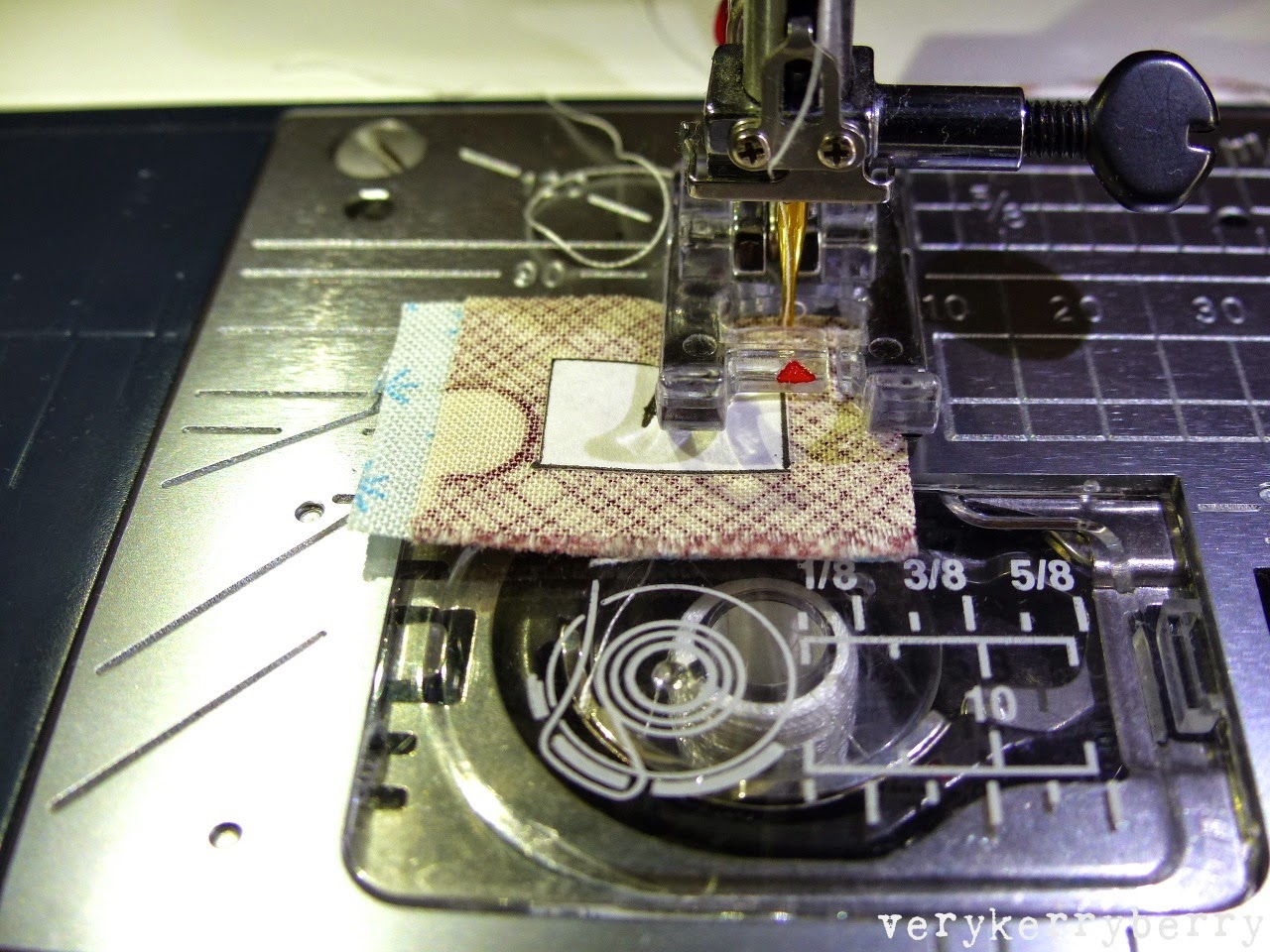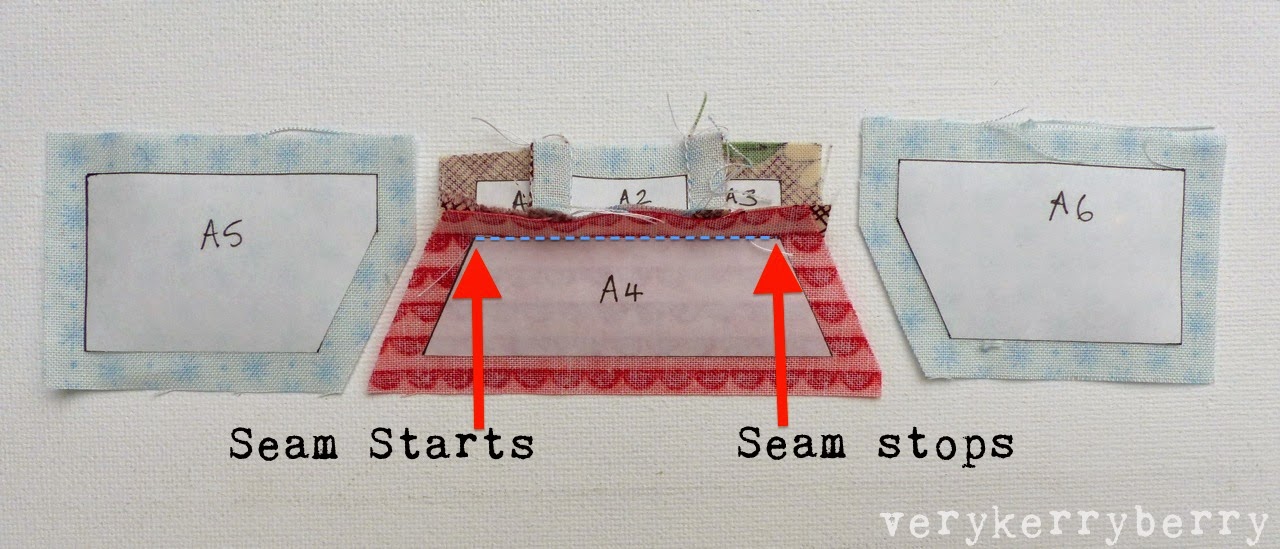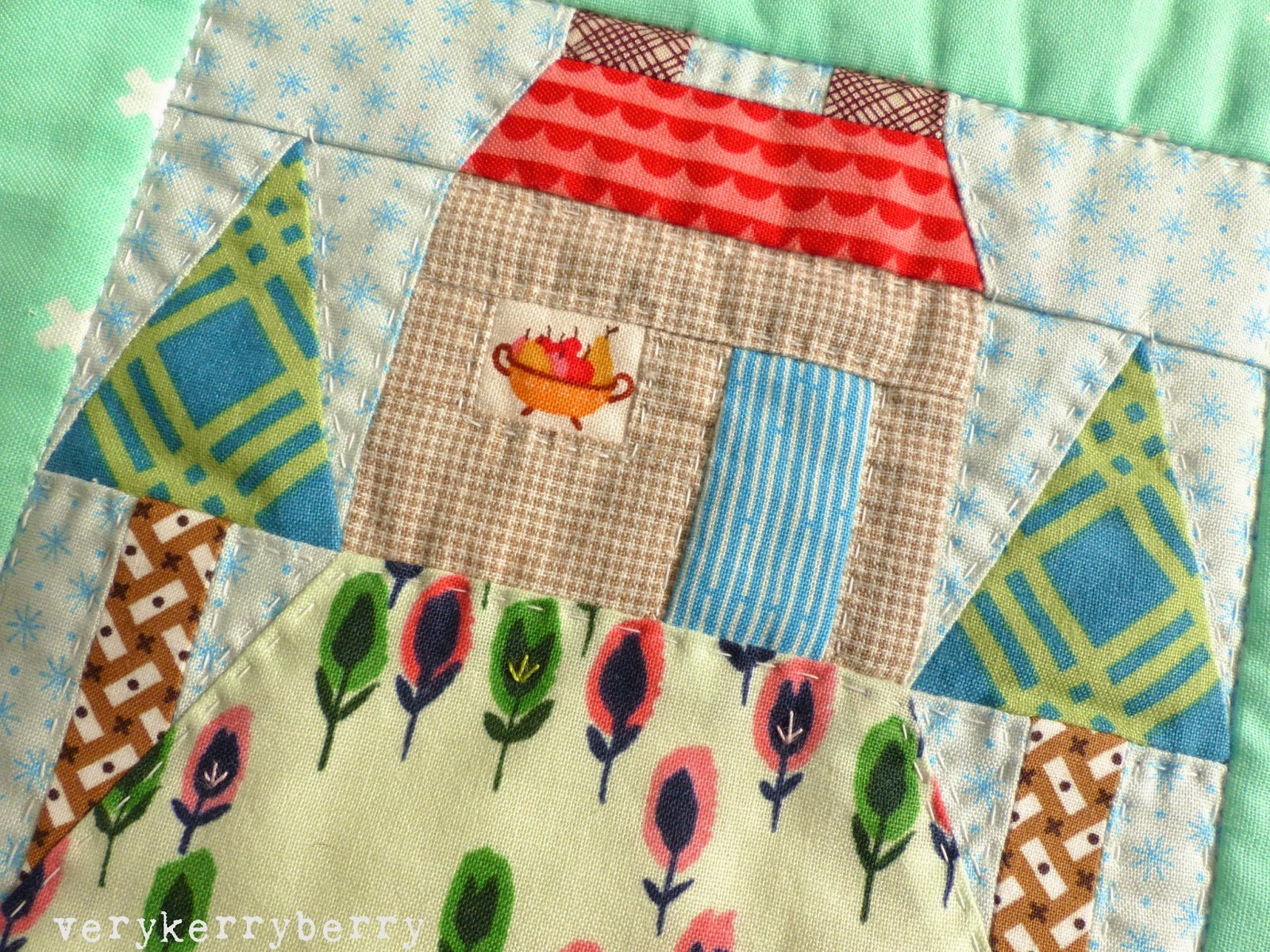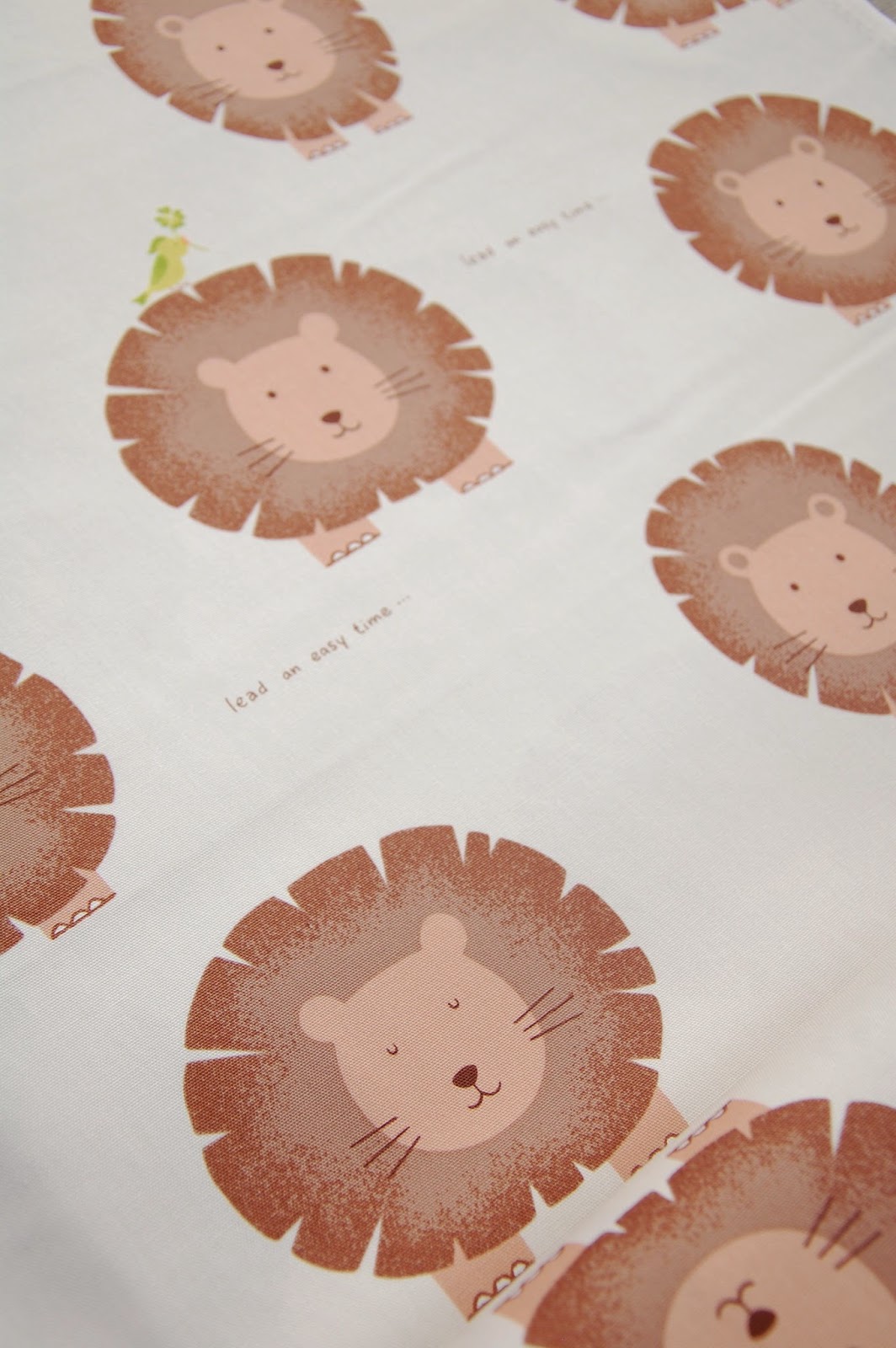Welcome to the first stop on the
318 Patchwork Patterns: Original Patchwork & Applique Designs
blog hop. I have been a fan of this book for so long, first the original Japanese publication by Kumiko Fujita and the reissue and translated version reprinted by Zakka Workshop/World Book Media. At the end of this post, there is a giveaway to win a copy of 318 Patchwork Patterns and all are welcome to enter, the winning copy will be sent anywhere in the world!
It is a book of few words but now I can actually read the brief text in the book! More than anything else, it is a book to inspire! It is a mix of paper pieced and appliqué designs. This blog post is going to cover two themes: firstly how to prepare and reproduce the small image in the book to make a 6" x 6" finished block; and secondly, how to sew the block using freezer paper piecing. I am concentrating on block, #160, House on a hill and my 6" square block ended up as a small wall hanging.
The main construction method described in the book for the pieced blocks is hand piecing but it is possible to machine piece the blocks using freezer paper piecing and even foundation paper piecing although some adaptations may need to be made on some designs. If you want to follow the hand piecing method,
Wynn has lots of hand piecing advice at
Zakka Art. You could even adapt some blocks for English paper piecing- the pin cushion block #15 from 'Sewing Goods' section would be a good example of a pattern that would work well using EPP- see
Jessie's blog series English Paper Piecing Basics for this technique.
Preparing the Image
1. Enlarge: Method One, Photocopy
The majority of blocks in 318 Patchwork Patterns are 2 ⅜" x 2 ⅜" . You can either use a photocopier to increase the size of the block by enlarging by 250%. Technically- this will make the block slightly under 6" so if you want precisely 6", enlarge by 253%. Now your block is enlarged. If you want your finished block to face the same way as the drawing, the image needs to be flipped or mirror images in some way- we'll do this when we transfer the drawing to freezer paper.
2. Enlarge: Method Two, Scan
I use a desktop scanner rather than a photocopier to reproduce the blocks and then some basic tools on my iMac to increase the image size. I will also mention a method for a PC. Firstly I scan the page I need. My canon scanner scans at actual size and loads it to my desktop. Alternatively, you could use a scanner app- I tried
Cam Scanner on my iPhone and it worked fine. Next, I use a programme called
Preview that came with my iMac to isolate the design I want to use. The scanned image will automatically open in
Preview. I choose
Rectangular Selection from the selection tools. This tool allows you to draw a border around the image that you want to select and it will show the size of the box so you can draw an accurate square or rectangle.
Once the square is drawn (shown as a dotted line around the chosen image) go to
Tools and select
Crop.
The image is now isolated and ready for you to 'Select All' and once it is selected, choose
Copy.
You now have a picture that can be saved and is ready to paste into a document and resize. I use a blank Microsoft Word document, paste it in and change the picture size to exactly 6" square using the right button on the mouse and choosing Format Picture and then the Size option. I chose 6.01" to allow for the line around the block. The advantage of using this method rather than photocopying is that there is now an option to 'flip' the image so that the design is reversed ready for piecing and the finished block will come out facing the same way as the original drawing. In the Formatting Palette tools, you can then choose Rotation and Flip Horizontal.
If you are using Windows, the equivalent to Preview is Windows Photo Viewer. Choose Open from the menu bar and then Paint and you will see rotation and flip options.
3. Trace and Number
The design is ready to number the pieces and then trace on to freezer paper. There is no definitive method to number the pieces. The designs in this book are too complex to be pieced in a single section, instead I usually eyeball the picture to work out how many sections there will be, give each section a letter, A,B,C etc and number the pieces. There is likely to be a Y seam in most blocks so I keep an eye out for these too. You can see my sections in this picture and I have numbered the top section and marked the Y seams on the chimneys/roof/sky. You can also add tick marks to help match up tricky areas like diagonals- see section C where I have added them in blue. There are no hard and fast rules here. I could have sectioned the design a different way but the three horizontal sections seemed the easiest.
If the image has been flipped, you can lay freezer paper over the top so that the dull papery side is facing you and trace transferring all the information. If the image hasn't been flipped, lay the freezer paper on top with the waxy side facing you and use a sharp hard pencil to trace the image- then turn the paper over and write the piece numbers/sections information on the paper side- the image is now flipped.
4. Freezer Paper Piecing
i. Once the pattern has been traced, I work on one section at a time and only cut out that section- so I don't lose any small pieces. Each piece is cut out along the traced lined using a scalpel knife and quilt ruler. Press the waxy side of the paper to the wrong side of your fabric using a hot iron and cut out allowing 1/4" eam allowance all round. I use a generous 1/4" to allow for the space of the stitches, the important thing is to be consistent on all pieces. This is all of section A prepared with seam allowances.
ii. The first seam is straightforward. Pieces A1 and A2 are placed right sides together, I align the corners of the freezer paper templates on both pieces precisely using a vertical pin and
this method, hold the pieces together and the stitch the seam from end to end. I use a very small stitch, usually 1.5mm so that the stitches are secure and I don't need to secure the seam at the beginning and end. Piece A3 is added in the same way. The chimney area above the roof is complete.

iii. The next piece involves sewing a partial seam in preparation for the Y seams when pieces A5 and A6 are joined. When piece A4 is added, the seam starts where the pieces of freezer paper meet together- see the photo below- and finishes where the freezer paper ends. The seam allowances are left unstitched. For this type of seam you will need to secure each end of the seam. Precision sewing is required! Start by sinking the needle into the precise position by hand or using 'needle down' button, then lowering the foot . Then sew slowly, three stitches forwards and three stitches back- counting each stitch! If you prefer, you can hand crank this step. Then, sew forwards stopping exactly where the freezer paper ends and reversing to secure the seam. It may help to mark the stopping point using a pencil to give yourself a target to aim for. If you go over by one stitch when you start or stop the seam you will need to unpick that stitch and sew it again.

iv. Now, to sew the first part of the Y seam. I like to sew from the intersection outwards as I find it gives better results and I have chosen to sew the shorter seam first between pieces A1 and A5. As in the picture below, arrange the fabrics so that A4 is lying away from the seam and the needle is sunk where the intersection between pieces A1 and A5 starts. As in step iii above, sink the needle, lower the foot and sew forwards three stitches, backwards three stitches, and then sewing to the end of the seam.
Repeat the same process starting at the intersection between A4 and A5 (see pic below) and sewing the seam outwards.
The completed Y seam can be seen in the picture below. You can press the seams how you wish. When I trim the threads from each seam, I like to leave 1/2" of thread tails which discourages any unravelling and stop little bits of thread poking through.
Repeat with piece A6 for the other side of the roof using the Y seam technique in step iv. That completes section A. The remainder of the block is sewn by sewing the remaining sections B and C adding the pieces in numerical order using standard seams. The sections are then sewn together to match the picture. With freezer paper piecing, aligning the sections precisely when you stitch them together makes for a much better looking block so use the
pin technique as before when matching the roof to the house, house to the hill and trunks to the trees. You can even use
a little glue basting to get the alignment spot on!
I added 2 ½" wide sashing around the block and then I hand quilted the block onto wadding.
I added backing and hanging corners and stitched in the ditch around the block.
I used a wide single binding, 2 ¼" wide and sewn on with a ½" seam allowance for a picture frame effect. You can find my single binding tutorial
here

If you have any questions about freezer paper piecing,
email me and I will do my best to answer! Meanwhile, enjoy the beautiful makes on the blog hop! You can find the blog hop details below and for those who like to sew along,
Al is hosting a 318 quilt-along
here.
GIVEAWAY TIME! To win a copy of 318 Patchwork patterns, comment below saying what you would like to see featured in a paper piece design? A cat? A hair dryer? A steam train? Anything you like! If you are a blog follower you can have an extra entry- just state how you follow in your second comment. I will need to be able to contact you by email. I will announce the winner on Friday 24th October. Giveaway is now closed.
Here are the other hop dates:
318
Patchwork Patterns Blog Hop
o Project: Gardening apron with blocks from Vegetables collection
o Project: Wall hanging or bunting from Halloween collection
o Project: Tote bag with appliqué blocks
o Project: Blocks from Christmas collection
o Project: Baby blanket from At the Circus collection
o Project: Make up kit and shoe bag from Girls’ Night Out collection
o Project: Table runner with blocks from Fruits collection
o Project: Tea Cozy from Tea Time Collection
o
Project: Tote or pouch
with appliqué block

















































